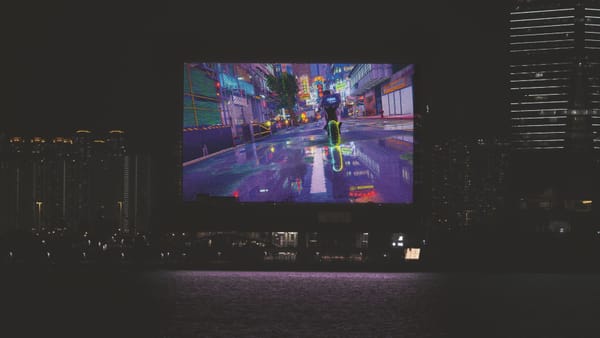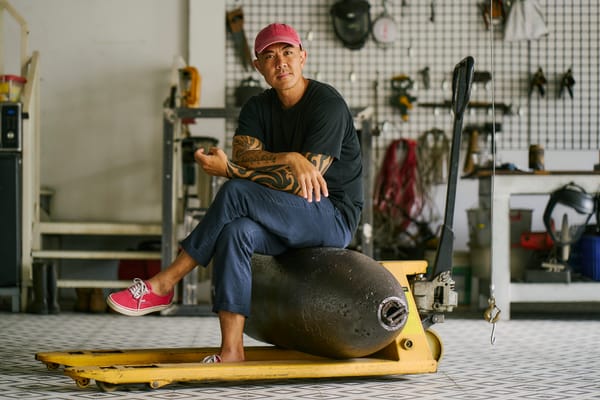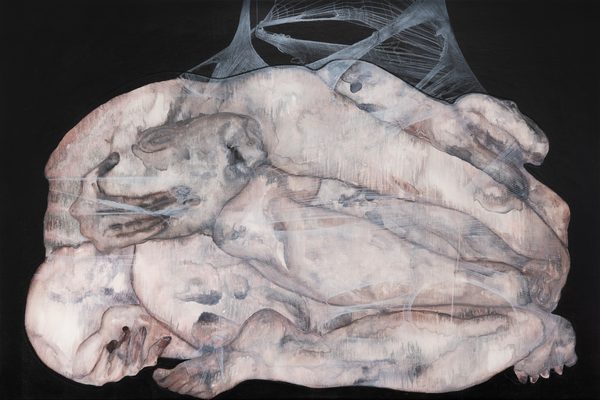People
The Public and Hidden Lives of Paintings: An Interview with Ali Cherri
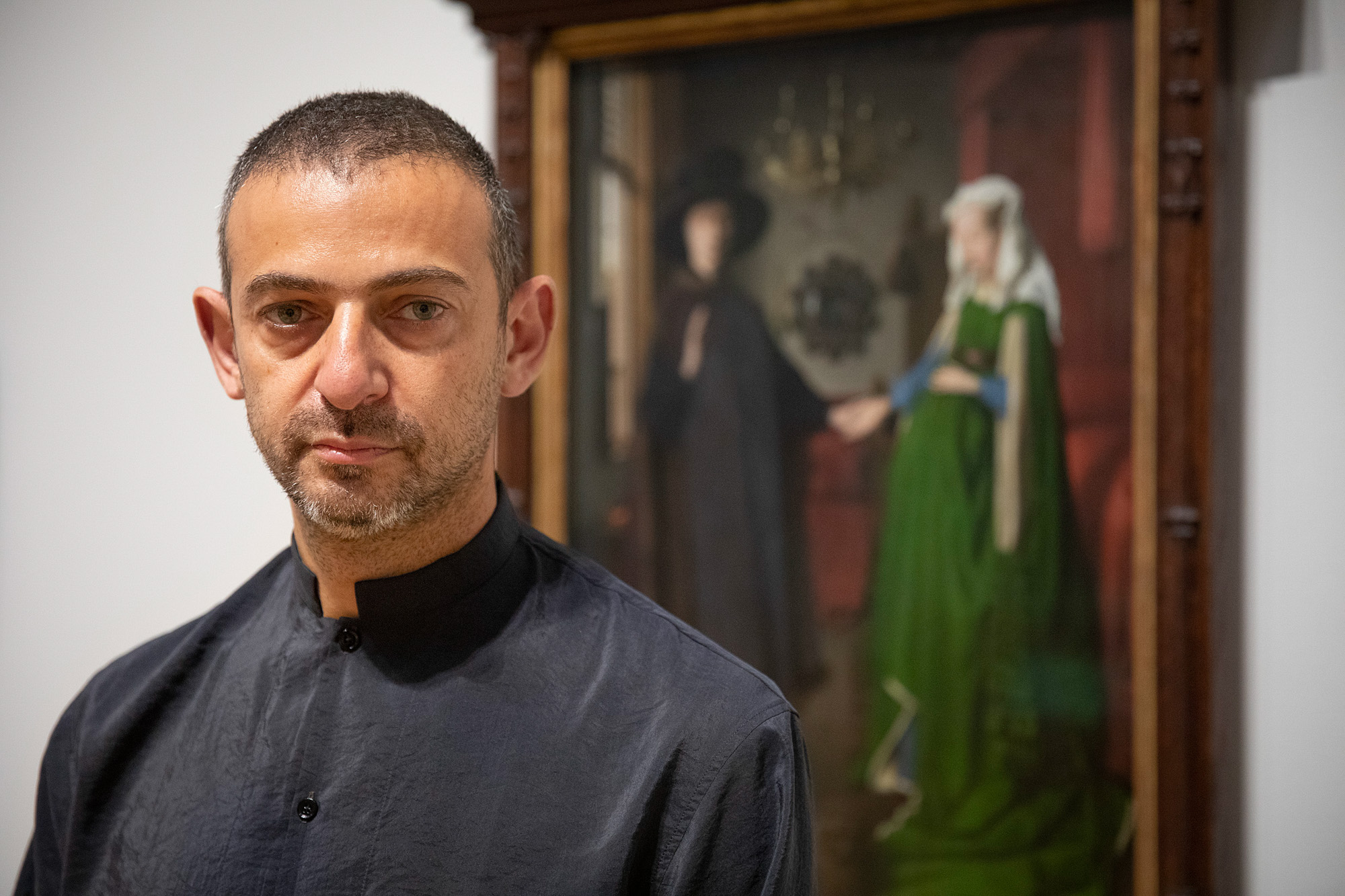

Beirut-born, Paris-based artist Ali Cherri engages the museum as a site of politics and examines the decontextualization of artifacts once they enter a collection, the archiving of violence, and the encoding of objects within discourses of nationalism. “If you prick us, do we not bleed?” (2022) is the culmination of Cherri’s 2021 artist residency at the National Gallery in London. During his research into the Gallery’s archive, Cherri uncovered accounts of vandalized works: Diego Velázquez’s The Toilet of Venus (The Rokeby Venus) (1647–51), Leonardo da Vinci’s The Virgin and Child with Saint Anne and the Infant Saint John the Baptist (c. 1499–1500), Rembrandt’s Self Portrait at the Age of 63 (1669), Nicholas Poussin’s The Adoration of the Golden Calf (1633–34), and Federico Barocci’s The Madonna of the Cat (c. 1575). Newspaper reports described the works’ damage in visceral, often bodily terms, as if inflicted on a living body, but also of note was the lack of information on—and, in particular, images of—the “victims” made available to the public. In “If you prick us, do we not bleed?” five vitrines or cabinets lined the Sainsbury Wing like a funeral procession, each filled with a fragmented installation based on a defaced work, imagining its life after the vandalism. Departing from these interventions, I spoke with Cherri about the psyche of a museum’s publics, the “politics of visibility” within cultural institutions, as well as collective memory and trauma.
A lot of your work is centered on what you call the “politics of visibility”—what is visible to a viewing public, and what is not. When did you start to use this term?
The question of things which become visible or invisible within the institution relates back to my time in Beirut. I was born in Beirut at the beginning of the Civil War [1975–1990] and lived most of my life there. My first visit to a museum was at the end of the Civil War in the early 1990s, when the National Museum of Beirut reopened. The museum’s artifacts had been removed to be protected, with large sculptures put in cement blocks. The first exhibition after the war comprised these cement blocks, which had photographs on them that said, “inside this box, there is this or that artwork,” and a small image of what was inside. This was an important experience of a museum where artifacts or artworks could retract or retreat inside bunkers. They could hide or disappear in moments of violence. They could become invisible.
This experience also raised the question of our faith in the museum. We cannot see what’s inside these boxes but we trust that what it is telling us is true. This is how I started looking at the politics of visibility: what the museum as an institution allows us to see or not to see. Museography is always a political question, including how the museum is lit and how certain artworks remain in storage, never coming out to the light to be made visible. Museums are also beginning to monetize attention. More and more institutions carry out crowd-funding to restore, preserve, and buy paintings. If people spend more time in front of a certain painting, they decide this is the work they want to restore. All of this affects the lives of certain artworks.
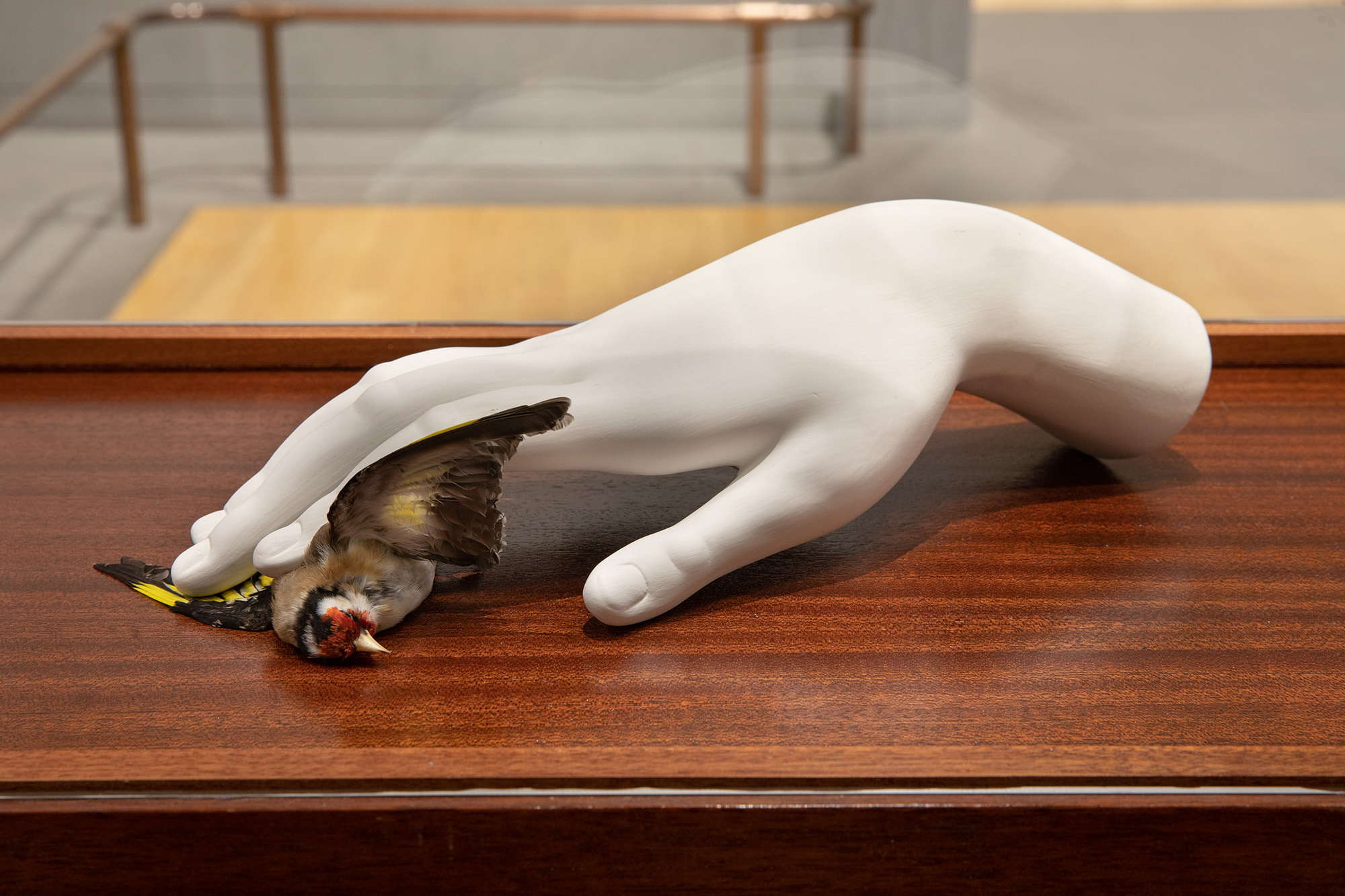
Do you believe that national institutions have the duty to be as transparent as possible to their publics? The National Gallery even advertises its collection as belonging to the British public. There’s this tension between institutional rhetoric and reality.
The museum always tries to advertise itself as a neutral space: open and accessible to the public. Of course, we know the truth is much more complex than this. It boils down to questions of access. I know the National Gallery is in the process of closing down the Sainsbury Wing, as they’re architecturally changing how people enter the museum. They’ve closed the main staircase, which used to be the main entrance. These are all political decisions. This has to do with controlling, policing, and creating more prescribed routes, especially since the rise of Covid-19. It’s not as innocent and transparent as it pretends to be.
This points to the nature of seeing as culturally constructed. Does this artifice in the politics of visibility play out in the aesthetics of some of your works? I’m thinking particularly of your use of glass-eyes—a prosthetic which only gives the impression of being able to see—in the interventions for Da Vinci’s The Virgin and Child and Velázquez’s Rokeby Venus.
The question of the gaze has always been central to my work. For example, in Somniculus (2017), an earlier video that was shot in five different museums in Paris, the opening comprises scenes from different films where the eye is being poked violently or taken out. It’s as though the prerequisite of entering the museum is to lose, metaphorically, your sight. We have to unlearn to see in order to see again. In the cabinet for the Da Vinci intervention is a pyramid of prosthetic eyes. These are 19th-century glass eyes that were implemented for people who lost their vision. They look out but don’t actually function—deficient.
It’s like a conceit or illusion.
There’s an illusion, but at the same time there’s something particular about glass eyes. They are looking at us—in a way, returning the gaze. Glass eyes are also used a lot in taxidermy and I’m fascinated with how taxidermied animals have a little twinkle in their eyes, where we feel they’re looking at us. By placing these within the museum it is to say that we are being looked at and observed. We are always in dialogue within the museum, it’s not a one-way relationship.
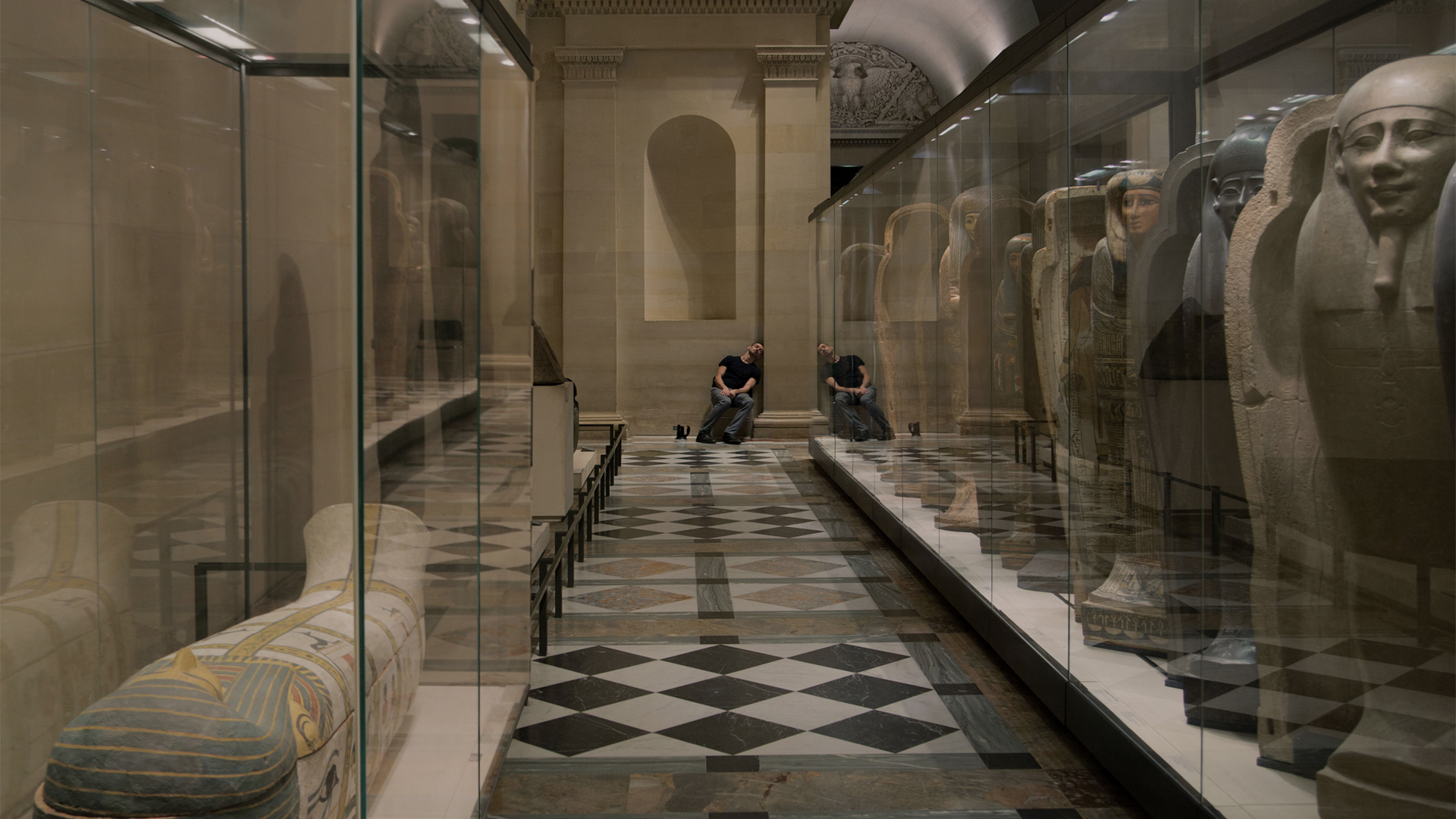
The idea of policing and controlling inevitably goes back to the female body. This is present in your intervention after The Rokeby Venus, and with the defaced Da Vinci painting, the Virgin Mary was the victim of the attack. Why do you think it’s the female figure or psyche that people seem to want to stake their claim over?
The attack against The Rokeby Venus was a premeditated political act. The perpetrator was the suffragette Mary Richardson. She wanted to destroy the most beautiful woman in mythological history, because the police had arrested the suffragette Emmeline Pankhurst, whom Richardson thought to be the most beautiful subject in modern history. She’s comparing two orders of value: beauty and politics. In the original Rokeby Venus painting, Velázquez creates a very modern subject, while using the classical theme of the toilette of Venus. Venus gives us her back, while looking at herself in the mirror; Venus is not looking at us, but at herself. She is self-sufficient; she does not need us to exist—she exists within her own realm. We can only look at her through this very hazy, out-of-focus reflection in the mirror, never being able to see who Venus really is. Our vision is impaired. It’s a very empowering take on the female nude. Yet, all the accounts of Richardson’s attack described it in terms of the “bruises” on Venus—the disfigured body. Representation also then becomes a living skin, which we have to take care of. It’s a very misogynistic approach to the idea of the vulnerable woman, even if Velázquez wanted the opposite.
All these ideas come together in the cabinet display: Velázquez’s original intentions, public response, and the gesture of the suffragette. I tried to take Venus back to an archaic order. The wooden sculpture is inspired by a very small, two-centimeter, 45,000-year-old female fertility figure found in Germany. In Western tradition, all female figures become “Venus.” The Venus I put in my cabinet is a very primordial version of Velázquez’s “modern” Venus. It can be considered a form of body or beauty alteration. It’s not always about signs of violence, instead it’s trying to return to something less civilized.
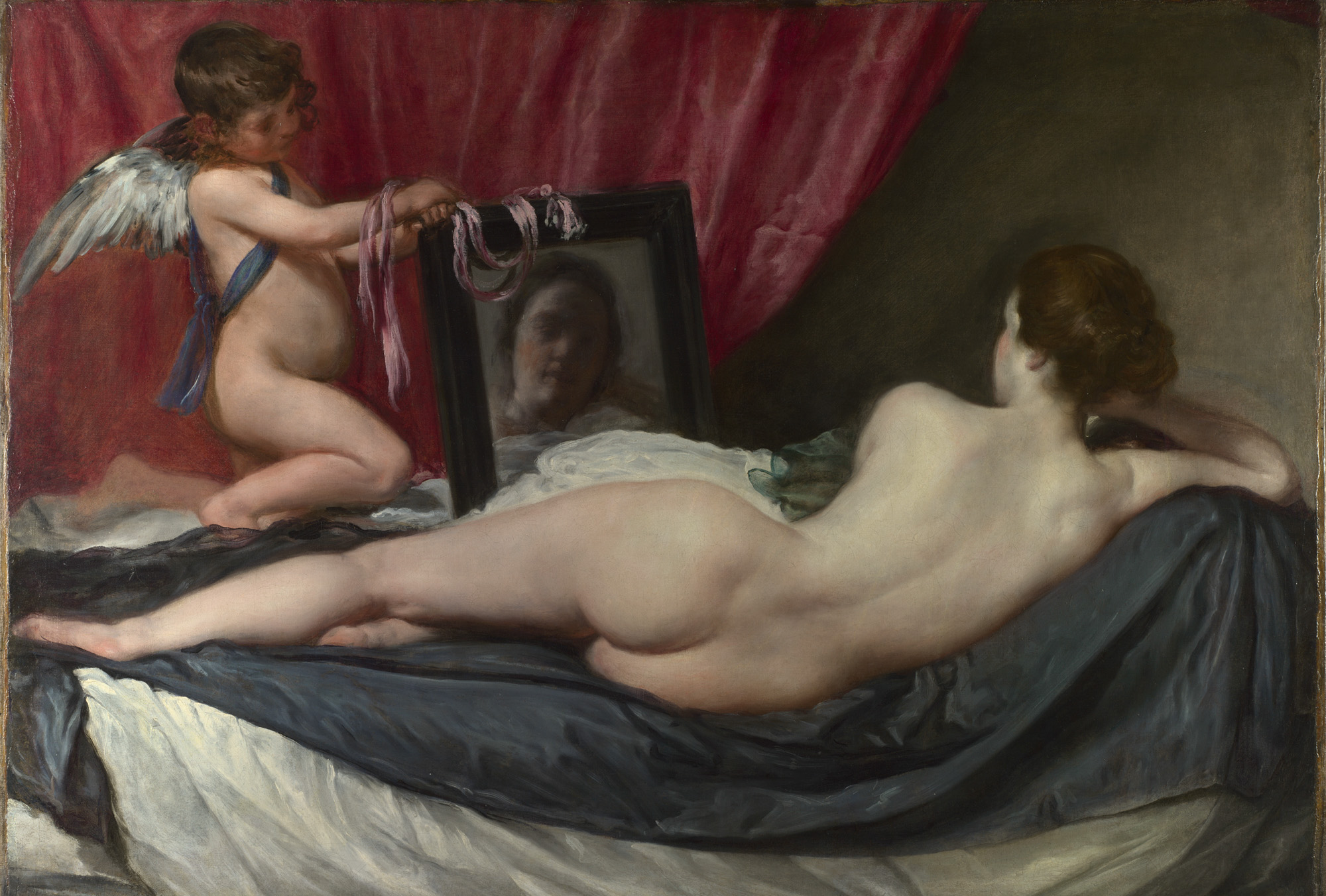
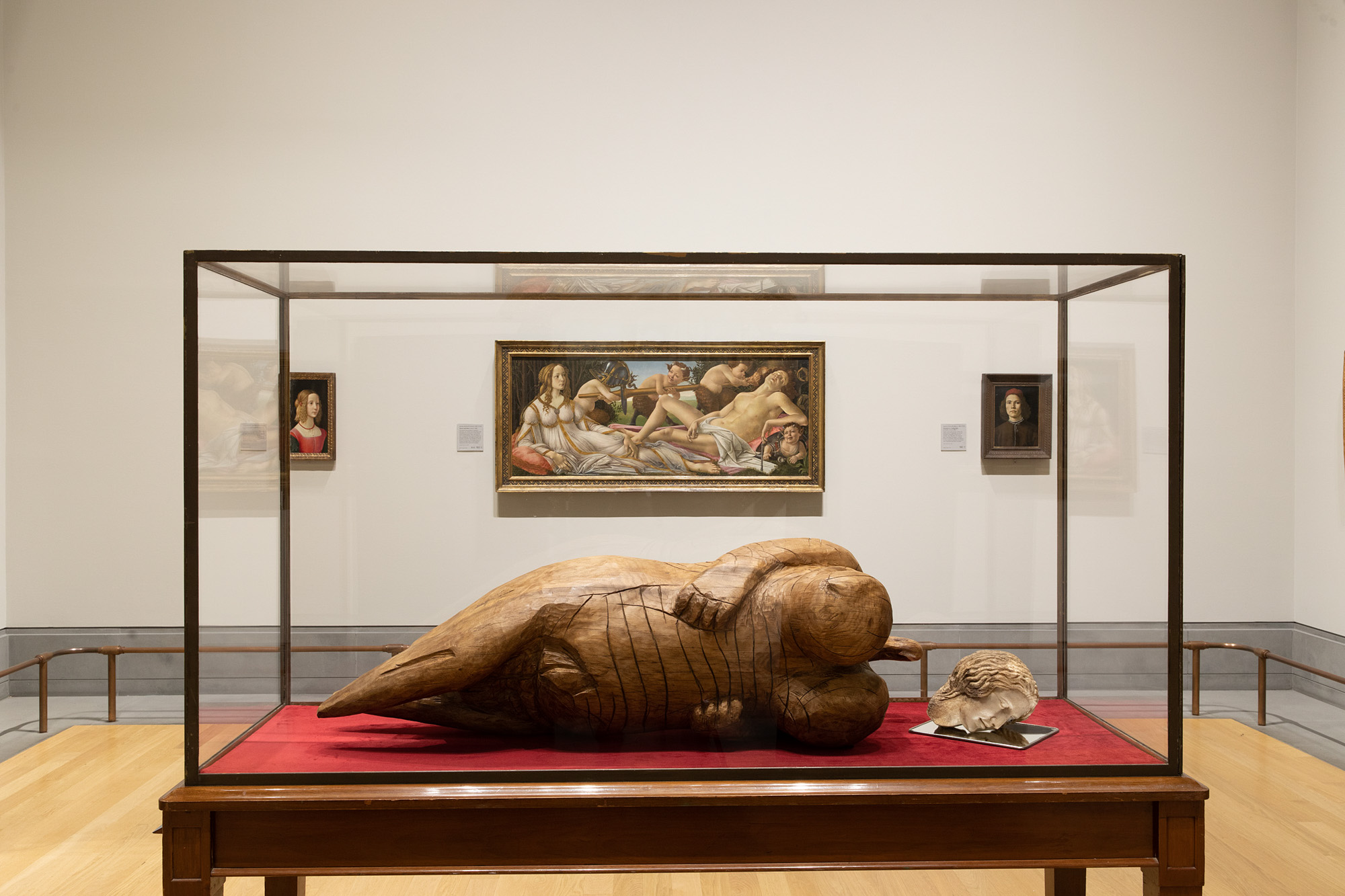
There’s quite a bit to do with collective memory and trauma then. Do you see yourself as a healer helping visitors work through the trauma of past vandalism attacks, or as someone who blows up the holes in the memory of public, or rather, publicized narratives? Do we get any closure?
I don’t think there’s a place for or possibility of healing. What we need to do is recognize this trauma or violence and try to understand what it does—the systems and collapse of said systems that this creates. I work a lot with the idea of catastrophe, which becomes like a collapse of language or representation. In the exhibition text, I state that we cannot “un-write” violence—it changes something in the core of who we are. We have to rethink language and representation after violence. The museum proposes that we have to erase the traces of these attacks. We can neither talk about them nor share their images. But something did happen.
The vitrine labels all seem to state the “how” of the original act of vandalism: death by gunshot wound, mauling by spray paint, etcetera, but not the “why.” Was there a particular reason for this? Do you think this speaks to a degree of self-censorship, whether conscious or unconscious? Or is there this horrific ineffability when it comes to the motivation behind the attacks?
It was a very clear decision not to mention either the names of the attackers or more details of the attacks, although I did lots of research. I had all the accounts, details, and police reports but my work is more geared toward the institution and its responses to the victims, not their perpetrators. I wanted to keep the focus on the artwork but, of course, the reasons behind the attacks are very important. They’re not random: all these were political acts done in a public space. It’s important not to look at them as isolated incidents. For instance, in the cabinet for the Da Vinci intervention, I put a newspaper from the day of the attack. I was interested in placing this political moment within the wider context of what was happening in the United Kingdom and the world. On the same day a man decided to get a gun, walk inside the National Gallery, and shoot Da Vinci’s painting. These are signs of a certain time. People who attack paintings in the National Gallery are clearly attacking what the gallery represents. It’s a national museum—a source of power, with money. All these considerations are inside the imaginary or psyche of the people who decide to attack the artwork.
Regarding this conflation between the nation-state and the museum, why do you think this happens? Is this a valid comparison between the two, or are we falling into a trap?
We are in the National Gallery. This is a national museum, relating to the construction of the myth of nation-creating. I find it very interesting to look beyond the National Gallery. Museums around the world today call themselves “universal” museums. There was a declaration on the universal museum [signed in 2002 by 18 museums in Europe and the United States] that, in a way, served to protect museums from demands of restitution. Let’s say the Louvre is not a national museum for France, it’s a universal museum. You can claim to be taking care of world heritage on behalf of humanity. You’re trying to play on these levels of meaning, beyond just the nation-state, in order [ironically] to be more nationalistic.
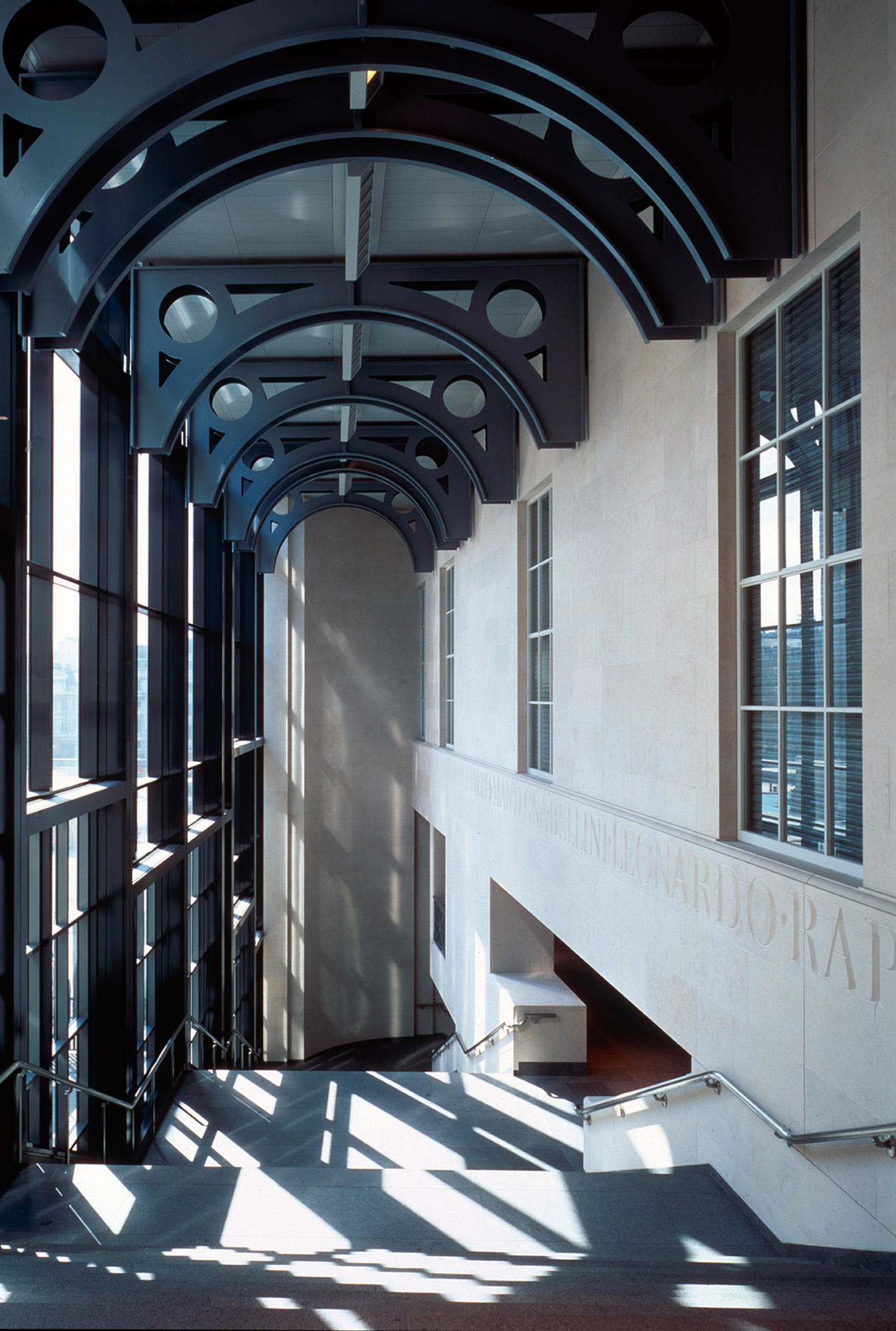
Speaking of gallery spaces as symbols of power, how has the Sainsbury Wing, with its histories and tactics of display, informed your own practice?
I had the choice to display my work almost anywhere in the museum. That was one of the privileges of my residency. Priyesh Mistry, the curator of the exhibit, and I first thought intuitively to place them near the original paintings but quickly decided we should not. I don’t want them to be in comparison with each other, and instead, wanted to bring my work into the general discourse surrounding institutions. The Sainsbury Wing was the perfect place, with all its religious iconography of the wound. The Da Vinci cabinet sits right in front of Antonio and Piero del Pollaiuolo’s The Martyrdom of Saint Sebastian (1475), where St. Sebastian reveals all his wounds. I was interested in asking what wounds are allowed to be made visible in the National Gallery, and what wounds we have to hide. There were attempts to completely hide The Rokeby Venus’s wounds from the unprofessional eyes of the visitor, but interestingly, in a conversation with the director of the Gallery, Gabriele Finaldi, I was told that the paint from the restored parts of the painting has aged differently. A hundred years later, these wounds resurface. I found it to be a beautiful metaphor: this impossibility of making the trauma invisible.
It seems that the original vandalized paintings are collateral damage for a number of ideals, whether political or personal. But is it possible to think that the art itself is dangerous: that it may have seduced someone into committing the assault?
I do believe so. When I walk inside the National Gallery, there’s this feeling of being overwhelmed. There’s this excess of beauty that overwhelms us. I truly believe that sometimes, beauty asks for its own destruction—so much emotion becomes intolerable. It’s interesting that in some of the accounts of the attacks, it’s stated that the perpetrators had the urge to destroy these paintings. There’s something very visceral that emanates from these works.
There’s this idea of cathartic release, too, in your work.
I wanted to create this community of destroyed, broken bodies. My interventions create this sharing of experiences, this solidarity. I saw a unity between the defaced works and decided to align them within the gallery. The works come together to create this one body, which becomes stronger. This is something I’ve been exploring in different ways in my sculptural practice. I get these fragmented archaeological objects, these little broken things, which come together through a process I call “grafting”—like in botany, when you graft two different species together, you just put them close to each other, make them touch the other, and let them communicate, live again, and create new life.
Moving forward, do you think there’s any hope of these histories of vandalism being incorporated into the National Gallery’s display practices?
Part of why I’m here is to open a discussion with the institution on the politics of visibility that come into play with the display of vandalized objects. I feel that this is happening with its curators, director, and workers. Finaldi even says in his foreword to my exhibition catalog that the Gallery initially did not want to talk about the attacks. But currently, I don’t have answers. I don’t know what the museum should do: if they should put this on a label or keep some of these traces visible. We have to be aware that when it comes to preservation practices, we don’t treat all categories of objects the same. With archaeological objects, they keep traces of time: they’ve not been restored to look new again but with the paintings there’s this obsession with making them look fresh, as though they were painted yesterday. There’s no universal way of doing things.
Ali Cherri’s “If you prick us, do we not bleed?” is on view at the National Gallery, London, until June 12, 2022.





